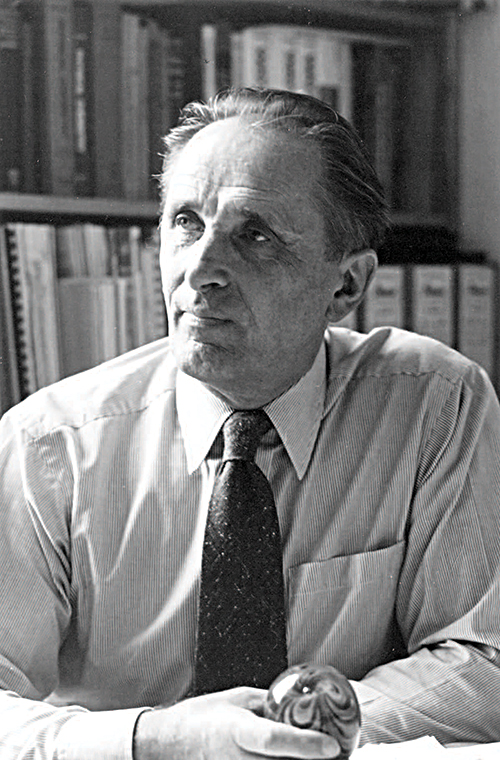Crystallography in CanadaOsvald Knop
Department of Chemistry, Dalhousie University, Halifax, Nova Scotia, B3H 4J3, Canada
One of the first to do crystallography in the Maritime Provinces was Osvald Knop (Ossie). Born in 1922, he arrived in Halifax in 1949 via Mazarek University in Czechoslovakia, Sweden, a spell at Cal Tech with Linus Pauling and Laval (DSc. 1957). At Cal Tech, Ossie worked on intermetallic phases attempting to solve the three dimensional structure of Co2Na using a Hollerith Punch Card adaptation of Beevers Lipson strips. A similar machine was installed in the basement of the Mathematics Institute in Oxford. It was powered by a multi-horsepower diesel motor, which was started by a crank handle, and when it ran (night only) the whole building shook. In Halifax, with Ossie there was also Karoline (Lottie) Castelliz, who received her PhD in Vienna in 1932.
In Halifax Ossie first worked on the three-dimensional structures of the Lycopodium alkaloids, though once his work showed progress, other groups with greater resources and deeper pockets took over. His other major interest were metal oxides, sulphides and intermetallic phases. The early equipment consisted of a Solus Schall generator - with a pre-war model plate - and a band-driven Weissenberg Camera. The generator, still faintly working, departed to the dump only 10 years ago - the transformer oil containing no trace of PCBs. The camera still exists, those who remember this model will not be surprised to learn that it is now exhibited as a memorial to the misery of working with a badly designed instrument.
Ossie and his students produced many elegantly accurate phase equilibrium diagrams, some with neutron diffraction data (he was the first to use Chalk River for diffraction experiments). The three main furnaces for this work - constructed by Ken Reid - were called Faith, Hope and Charity and survived in working order for many years. Ossie's time in Halifax included 7 years at Nova Scotia Technical College and many years at Dalhousie. He retired in 1990, became an Emeritus Professor and still comes into the lab most days of the week. |

